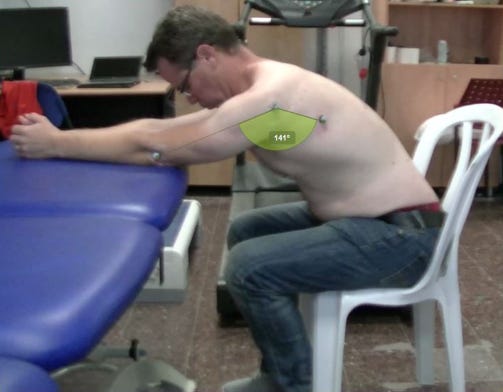What exercise should you choose to improve shoulder flexion?
Article review of Rabin et al., 2021
Paper title and link to paper:
Regaining motion among patients with shoulder pathology - are all exercises equal? (Rabin et al., 2021)
Overview of the paper:
This study in the Shoulder and Elbow journal looked at commonly prescribed exercises to improve shoulder flexion. EMG is commonly used in shoulder rehabilitation guidelines (Thigpen et al., 2016) to guide exercise selection but this study wanted to review which exercises would be more beneficial in targeting flexion range of movement whilst also being comfortable to the patient.
The authors used 40 patients who had some element of shoulder flexion loss from a variety of conditions such as a frozen shoulder to stiffness following a rotator cuff repair. They looked at four different exercises and asked the patient to describe the pain during the exercise and the perceived difficulty of the exercise. The range of movement achieved during the exercise was analysed objectively using a video camera and reflective markers on the patients.
The four exercises used were as followed:
The authors concluded that:
“Due to the greater ROM allowed, and similar or even lower level of pain or difficulty, clinicians may wish to initially recommend the forward bow and table slide for regaining shoulder flexion ROM.”
Before we jump to these conclusions that we should start rehabilitation with the forward bow and table slide, I think the first thing we need to look at is this table below. It shows the average flexion angles, the pain intensity and the perceived difficulty of the exercise in the four exercises.
Having a look at the data from the table, it makes me question these recommendations. Although statistically significant, you can see the confidence intervals all overlap every exercise in all of the three measurements of all four exercises. I don't feel you can be confident with that these findings warrant recommendations that one of the exercises is better than the others.
For myself personally, these results highlight that all four exercises are good options for working into shoulder flexion without significant discomfort.
As we are dealing with a patient in front of you, and not an average, one size does not fit all. Thus, if one exercise does not feel good to a patient, trialling a range of suitable exercises could be useful to find something that they can do. We know muscle guarding can play a part of shoulder pathology, so ensuring the patient is confident and happy with the exercise may help to alleviate this guarding.
As always, if anyone has any comments, further reading or suggestions on this topic please feel free to fire them at me on here or on my Twitter. I am always learning and any discrepancies on what I have written is thoroughly encouraged.







Hi Adrian, thanks for this post, it's given me food for thought for alternative options. And speaking of which, how would you suggest a patient performs the pulley exercise at home?